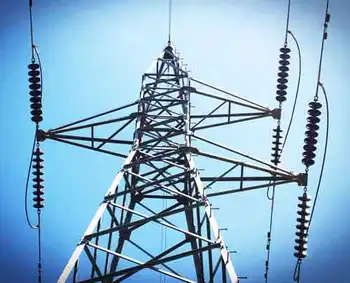System to use sun to power up
TENNESSEE - Biomass was the renewable fuel du jour as Oak Ridge National Laboratory talked up plans to replace its existing steam plant with a new $40 million system powered by wood waste and by-products.
But just west of ORNL's visitor center on Bethel Valley Road, workers are busy on another project that will tap another of nature's gifts - the sun.
Construction has begun on a 288-foot-long, 51.25 kilowatt solar system that will supply power to the office building that houses researchers associated with ORNL's buildings technology programs. The solar system, coupled with planned energy-efficiency improvements, should supply nearly all the power needs of the building. As a result, after spending the last few years developing the zero-energy home concept, the lab should debut its first zero-energy office building sometime next year.
The project is a relatively small piece of ORNL's larger sustainability initiative that includes the above-mentioned biomass-powered project, part of an $88.1 million energy-savings contract with Johnson Controls that includes a variety of energy-efficiency measures. (See related article in the Business section.)
Construction of the array plus other energy-efficiency improvements such as more efficient air-conditioning units and occupancy sensors for controlling lighting in the building will cost $500,000 to $750,000, according to Greg Palko, energy-efficiency manager for ORNL.
The solar collectors are being installed by Lightwave Solar Electric in Nashville and will operate at 18.7 percent efficiency - much more efficient than the lab's first solar installation near the visitor center, which operates at about 13 percent efficiency.
"The (national) laboratories in general are under a mandate to include more renewable energy in their energy portfolios," said Curtis Maxey, solar researcher at ORNL who, along with Palko, is working on the project. For now the panels will simply be tied into the local node that supplies the building with electricity, Maxey said. Eventually, he said, ORNL may pursue status as a generation partner with TVA, which would allow the lab to sell power back to the grid.
In addition to meeting DOE's renewable and energy-efficiency requirements, the project has research benefits as well, Maxey said.
"We're looking at the effective integration of solar energy into the communities," he said. Researchers will use the system to study power inverter technology and electric power distribution, he said.
For all its visibility and sex appeal, the project won't save the lab any money. The amount of power produced by the systems doesn't really offer a feasible payback, Palko said.
"Relative to building a new steam plant, dollar for dollar it's not comparable," he said. "In our case, it's more of modeling the possible."
Related News

Planning for Toronto?s Growing Electricity Needs
TORONTO - As Toronto's population and economy continue to expand, the demand for electricity in the city is also increasing rapidly. In response, the Ontario government, in partnership with the City of Toronto and various stakeholders, has launched an initiative to enhance the electricity infrastructure to meet future needs.
The Ontario Ministry of Energy and the City of Toronto are focusing on a multi-faceted approach that includes upgrades to existing power systems and the integration of renewable energy sources. This initiative is critical as Toronto looks towards a sustainable future, with projections indicating significant growth in both residential and commercial…




